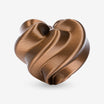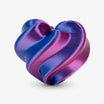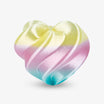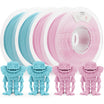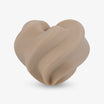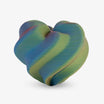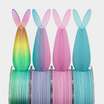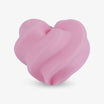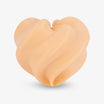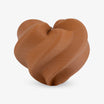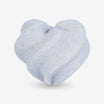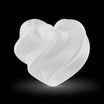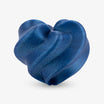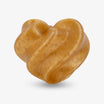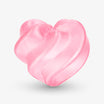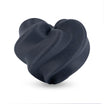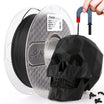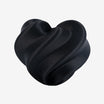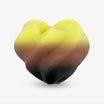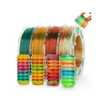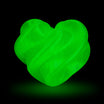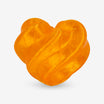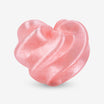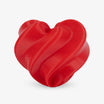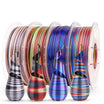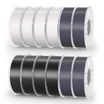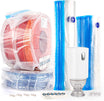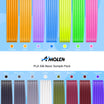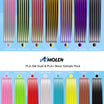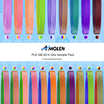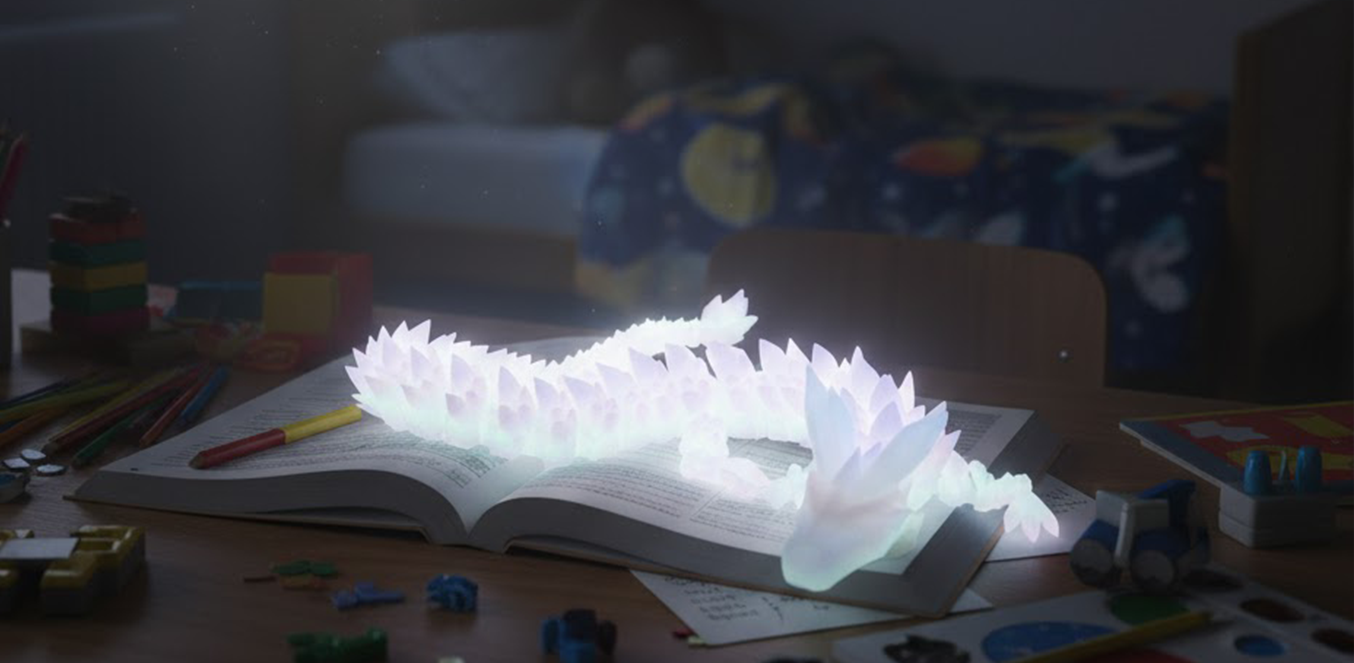Many children are fascinated by toys that shine softly in the dark. They add an element of fun to nighttime play and can even be comforting during bedtime. But parents often wonder if these glowing novelties are truly safe for young hands and curious mouths. This piece takes a close look at their safety aspects, materials, and ways to keep playtime risk-free.
How Glow-in-the-Dark Toys Produce Light
Understanding how these toys emit light helps parents judge their safety. There are two main methods that manufacturers use, each with different features and potential risks.
Phosphorescent Materials
Phosphorescence happens when certain materials store light and release it slowly. Most modern glow-in-the-dark toys use strontium aluminate, which glows brighter and lasts much longer than older zinc sulfide. It is safe when made to standards like EN71 or ASTM F963 and from regulated sources. Good-quality products can glow for hours after just minutes of light, while zinc sulfide usually fades within 20–30 minutes.
Chemical Light Reactions
Glow sticks and some light-up bracelets work by mixing two liquids when an inner tube breaks. These liquids often contain hydrogen peroxide, dibutyl phthalate, and a dye for color. They are low in toxicity but can irritate skin or eyes. Dibutyl phthalate is strictly limited in children's products in some regions. Do not swallow, and seek medical advice if ingestion happens.
Both methods can be safe under normal conditions, but phosphorescent materials are generally safer for repeated handling, while chemical glow products need closer supervision.
Possible Safety Concerns with Glow-in-the-Dark Toys for Children
While most glow-in-the-dark toys sold by reputable brands are safe, there are still important points for parents to consider.
- Harmful substances in coatings: Some low-quality products may contain lead, cadmium, or other heavy metals in the glow pigment. These can be harmful if touched often or if the coating flakes off.
- Choking hazards: Small components, particularly in keychains, charms, or detachable parts, can be dangerous for children under three years old.
- Chemical leakage: In glow sticks, damaged casings can leak liquid. This may stain fabrics, irritate skin, or cause minor burns if contact is prolonged.
- Sharp edges or poor finishing: Cheap toys sometimes have rough edges or loose attachments that can scratch or pinch small fingers.
- Age-related risk differences: Younger children are more likely to put toys in their mouths, while older children might attempt to break open glow sticks to see what is inside.
Buying toys that meet safety standards and inspecting them regularly reduces the risk of these problems.
Are Glow-in-the-Dark 3D Printing Filaments Safe for Children?
When using glow-in-the-dark filaments to make fun printed items, parents should know what they contain, the risks, and safer ways to use them.
What They Include
Most are PLA filaments or PETG filaments mixed with strontium aluminate, a non-radioactive glow powder brighter and longer-lasting than zinc sulfide. Good brands provide an SDS and note compliance with EN 71-3. RoHS may also appear, though it mainly applies to electronics, not toys.
Possible Risks
- Porous surfaces: FDM prints trap dirt and are not mouth-safe.
- Small parts: Fragile prints can break; avoid sizes that fit into the CPSC small-parts cylinder.
- Dust: Sanding releases fine powder that may irritate eyes or airways.
- Cleaning: Harder to disinfect than sealed factory toys.
Safer Practices
- Buy from reliable brands with clear safety data.
- Seal surfaces with a child-safe clear coat.
- Print larger, sturdy pieces without sharp edges.
- Do finishing work away from children.
Glow 3D filaments are generally low-hazard, but home prints are not certified toys. With quality materials, sealed surfaces, and careful design, kids can enjoy the glow more safely.
How Parents Can Check Glow-in-the-Dark Toys for Safety
Parents can play an active role in ensuring their child's toys are safe, starting well before the first play session. A few smart checks at the store and simple tests at home can greatly reduce the chances of hidden hazards.
Checks to Make Before Buying
Parents can make safer choices by following a few key checks before buying.
| Selection Step | What to Look For | Why It Matters |
| Source | Established brands and certified sellers | Reduces exposure to untested materials |
| Safety Markings | Compliance with ASTM F963, CPSIA | Ensures testing for toxicity, flammability, and structural safety |
| Material Information | Clear labeling of ingredients | Helps avoid harmful pigments |
| Build Quality | Smooth edges, sturdy casing | Prevents cuts and breakage |
| Age Suitability | Matches packaging recommendation | Avoids choking and misuse risks |
Choosing toys with transparent safety information and quality construction gives children more secure play experiences.
Simple Safety Tests at Home
Sometimes, parents want to do a quick check themselves before giving a toy to a child. Simple home tests can spot visible hazards.
- Surface inspection: Look for peeling paint, uneven coatings, or powdery residue.
- Smell test: A strong chemical odor may suggest volatile compounds that are not child-safe.
- Edge and joint check: Run your fingers over edges to detect sharp or rough areas.
- Durability test: Apply gentle pressure to joints or attachments to ensure they do not loosen easily.
- Glow quality check: Shine a bright flashlight on phosphorescent toys for 30 seconds, then switch off the lights to see if the glow is even and long-lasting.
These simple steps cannot replace lab testing, but they help filter out poorly made items.
Glow-in-the-Dark Toy Safety Tips and Storage
Even safe toys need proper use and storage to keep children protected.
Handling during play
- Keep glow sticks intact; do not bend excessively or bite.
- Avoid placing glow-coated objects in the mouth.
- Encourage gentle handling to prevent surface damage.
After playtime
- Wash hands if toys have glow coatings or if handling glow sticks.
- Store chemical glow toys away from heat and direct sunlight to prevent leaks.
- Place toys out of reach of very young children when unsupervised.
Extra Note: If a glow stick leaks, wash the affected skin with soap and water, and remove contaminated clothing. For eye contact, rinse gently with clean water for several minutes and seek medical advice if irritation persists.
Consistent habits like gentle play and proper storage help extend toy life and reduce exposure to hazards.
Safe Disposal of Damaged Glow Products
When a glow toy is damaged or past its usable life, proper disposal prevents accidental exposure and environmental harm.
- Chemical glow sticks: Wrap in a sealed plastic bag before placing in household trash to prevent leaks.
- Phosphorescent plastic: Check if local recycling programs accept it; otherwise, dispose of it with non-recyclable waste.
- Electronic glow toys: Remove batteries before recycling as e-waste.
Responsible disposal keeps both children and the environment safer.
Alternatives to Glow-in-the-Dark Toys
For very young children or those with skin sensitivities, non-toxic glowing options can still provide fun without direct exposure to pigments or chemicals.
- Glow-in-the-dark wall decals: Decorative stars or shapes made from safe plastic, placed out of reach.
- Glow pillows or blankets: Soft textiles with woven phosphorescent threads, safe for cuddling.
- Battery-powered night lights: Provide steady, gentle light without chemical exposure.
- LED fiber optic wands: Bright, reusable, and free from internal liquids.
Alternative products offer similar visual enjoyment with fewer safety considerations.
Make Every Glow-in-the-Dark Toy a Safe One
Glow-in-the-dark toys bring a special touch to playtime, making dark rooms feel a little more magical. The key to keeping them safe is to choose well-made, certified products and to supervise young children, especially with items that contain liquid components. With these precautions, children can enjoy their glow toys while parents rest assured about their safety.
3 FAQs about Glow Toys
Q1: If a glow toy falls into water, can it still be used?
A: If the toy glows and the coating is not damaged, it can be used again after it is dried well. Dry it and wipe it to stop mold from growing and to make sure nothing sticks to it. But chemical glow sticks may get weaker or leak after being in water for a long time, so replace them to stop chemicals from touching skin or being swallowed by children.
Q2: Are glow toys safe around pets?
A: Pets can bite glow sticks and swallow the liquid inside. This can cause drooling, vomiting, or mild stomach upset. Keep these toys away from pets and check them often for bite marks. If your pet bites a glow toy, wash its mouth gently, watch for strange behavior, and call a vet right away.
Q3: Do glow toys affect children's sleep?
A: A very bright glow can make it harder for some children to sleep because it keeps their eyes active and lowers melatonin. For bedtime, choose toys with softer and dimmer lights and keep them away from the bed. You can also let the child use them only before sleeping, then turn them off so the room is darker and calmer.


